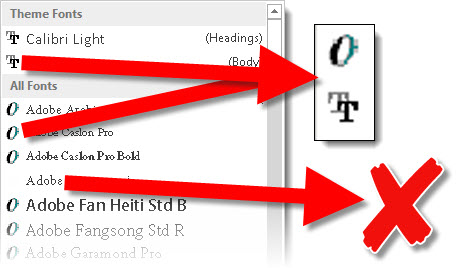There are dozens, actually 1,000s, of ways to display your ABC’s. Font styles are created to display each letter in unique ways. Microsoft supplies a set of fonts with Office. Adobe supplies many fonts with the Creative Suite (now Creative Cloud) software packages. And there are many ways to download and add custom fonts to your computer.

If you use a custom font in a presentation, and that custom font is not installed on the computer that is viewing the presentation, a font default – or substitution – is used. We cannot control which font is used as the default and we cannot guarantee what the slide will look like with the default font in use.
PowerPoint has a few tools to help with this situation. The tools are not extensive, and definitely do not do enough to aid us users in identifying font issues and resolving font issues.
The first step is to identify if PowerPoint is using fonts on the computer or substituting fonts. The tool is very simple, and simplistic. Select a text box, then on the home tab click the font selection drop down. In this menu, each font has 1 of 3 icon options to the left of the font name.

1. The Open Type icon is a large stylized “O.”
2. The True Type icon is two letter “T”s overlapping.
3. NO ICON, just blank space, lets you know PowerPoint recognizes a font is needed, but it is not installed on this computer. When there is no icon, PowerPoint is substituting that font with a default font (of its choice).
– Troy @ TLC
